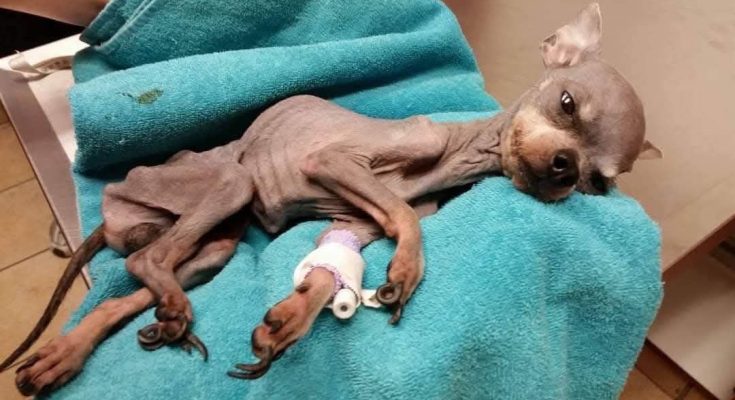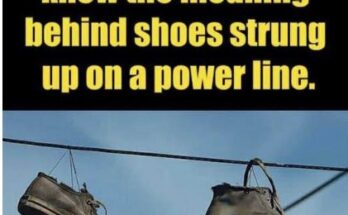Let me introduce you to a dog named Sampson, and the woman he loved—Eleanor. Eleanor was a kind-hearted woman, in her early 80s, who had lived alone for years. Her life had been filled with memories of family, travel, and the companionship of her loyal dog, Sampson. Sampson was a rescue, adopted from a shelter when he was just a puppy, and he had been by Eleanor’s side ever since. They were a perfect pair—Eleanor, with her gentle and loving spirit, and Sampson, with his playful energy and constant devotion. Together, they were inseparable, each providing the other with the companionship that made their world feel complete.
But as the years passed, Eleanor’s mind began to change. The signs were subtle at first—misplacing her keys, forgetting appointments, and sometimes losing track of time. But soon, these small lapses became more noticeable. She started forgetting to turn off the stove, missing doses of her medication, and even forgetting Sampson’s meals. Eleanor’s family lived far away, and they often spoke to her on the phone, but they couldn’t see what was happening in her home.
Eleanor had been diagnosed with Alzheimer’s disease. It was a slow process, one that robbed her of her memories and, ultimately, her ability to care for herself and for Sampson. Her forgetfulness became more frequent. Some days, she didn’t remember where she had placed her glasses. Other days, she didn’t remember that Sampson needed food, water, or affection. The most heartbreaking part of this tragic situation was that Eleanor still loved Sampson deeply, but her illness made it impossible for her to show it in the ways she once did.
Day after day, Sampson waited by the door, wagging his tail with the hope that his human would come to give him his meal, to pet him, to reassure him that everything was okay. But Eleanor, caught in the fog of her mind, couldn’t remember to care for him. She couldn’t remember to feed him or even let him outside. Sampson grew weak. He became dehydrated, malnourished, and, eventually, he passed away in silence—his loyal heart breaking, just like his owner’s.
The death of Sampson was not the result of neglect or malice—it was the tragic consequence of an illness that stole Eleanor’s ability to care for herself and her beloved companion. It was the heartbreaking reality of a world where our elderly are often left to fend for themselves, and where their animal companions—who give them so much love and comfort—suffer in silence alongside them.
This is not just Sampson’s story; this is the reality for many elderly people across the country, and it’s happening every day. As the elderly population grows, more and more individuals are living alone, isolated from the support systems they need. They may have children who live far away, or no family at all, and some may even be unaware of how much their own health and safety have deteriorated. But what is even more tragic is that in many of these cases, their animals—who are their constant sources of comfort and companionship—are also left to suffer because of this isolation.
This Is an Urgent Wake-Up Call.
Sampson’s death should serve as a reminder to all of us that we cannot afford to ignore the elderly in our communities. There are elderly people in every neighborhood, often living in silence and solitude, and many of them have pets who provide them with love and a sense of purpose. Yet, these animals are often the first to suffer when their owners cannot care for them properly. Animals like Sampson, who depend on their human companions not only for food and shelter but also for love and care, face unimaginable hardships when their owners can no longer provide for them.
It’s time to take action. Are you aware of the elderly people in your neighborhood? Do you know if they have pets? Are they okay? Are their animals being properly cared for? These are the questions we all need to be asking ourselves. The elderly in our communities should not have to face the challenges of aging alone. They should not have to suffer in silence, and neither should their animals.
Here’s where you come in. This is a call to action—a call for you to be more than just a bystander. The solution starts with you, and it starts with compassion.
How You Can Make a Difference:
-
Look for the signs of need. It can be easy to overlook the elderly in our communities, especially if they are not visibly asking for help. Take a moment to check in on your neighbors, especially those who live alone or who are known to have health issues. Offer to help with basic tasks—whether it’s taking out the trash, picking up groceries, or just sitting down for a chat. You never know how much that small act can mean to someone who is isolated.
-
Check on their pets. If you know someone in your neighborhood has a pet, make sure that the pet is being properly cared for. Animals are not only companions for elderly people—they are often a source of emotional support and comfort, especially for those with mental health challenges. By ensuring that their pets are fed, walked, and loved, you can help relieve some of the burden they may be facing.
-
Create a neighborhood support group. The elderly and their pets are often the forgotten members of our communities. By organizing a group of neighbors who are willing to check on the elderly in your area, you can make a real difference in their lives. Create a list of people who may need assistance, and assign someone to check on them daily. You can help ensure that they are safe, have food, take their medications, and that their pets are being cared for as well.
-
Be proactive in offering help. Don’t wait for someone to ask for help—they may not even realize they need it. Take the initiative to offer your assistance. If you notice someone who is struggling with tasks like shopping, cleaning, or managing their pets, offer to help. Sometimes, all it takes is someone noticing that they need help to make a world of difference.
-
Stay connected. Many elderly people feel invisible and isolated. A simple phone call or a knock on the door can brighten their day. Let them know that they are not alone. For those who have pets, you may even offer to take their pets for a walk or help with grooming. Small gestures can have a significant impact on their well-being and their animals’ health.
Caring for Our Elders and Their Animals: A Sacred Responsibility
Caring for our elderly neighbors, and the pets they hold dear, is not just a charitable act—it is a responsibility we all share as members of a compassionate society. The elderly deserve our respect, dignity, and most importantly, our support. We can prevent the tragedy of Sampson’s death from happening to another animal, another person, by simply looking out for those who need us most.
Imagine if we could create communities where the elderly never feel forgotten, where their pets are safe, and where no one is left to suffer in silence. Imagine a world where we come together to ensure that those who have given so much to society in their lives are cared for in their later years, and their animals receive the same love and attention they’ve given them for years.
This is not an impossible dream—it’s a reality we can create, one small act of kindness at a time. You can make a difference. We can make a difference.
Let’s make sure that Sampson’s story is not in vain. Let’s honor his memory by coming together as a community, ensuring the safety and well-being of our elderly and their beloved pets. Let’s stand up for those who can no longer stand up for themselves and let the simple act of caring lead us to a more compassionate world.



